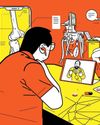
In its 2018-19 annual report, British luxury fashion house Burberry announced revenues of £120 million from its children’s line, up from £77 million in 2015. While total revenues had increased by 20.94 percent in this period, revenues from the children’s line had jumped 54.4 percent. The numbers, perhaps, justify the fashion house launching its children’s wear in 2001.
While till the first decade of the 2000s, brands such as Mothercare, Gymboree, Children’s Place and The Walt Disney Company had catered to the market of children’s wear, accessories and toys, it was in the following decade that design houses and high-end fashion labels such as Balmain, Dior, Gucci, Fendi, Dolce & Gabbana and Givenchy began to launch their children’s lines. It helped that children of Hollywood actors, music and TV stars became celebrities in their own rights: Victoria Beckham’s youngest child Harper, born in 2011, did not repeat an outfit until she was 15 months old, while Beyonce’s daughter Blue Ivy Carter, 8, and Kylie Jenner’s 19-month-old daughter Stormi often dress in the same luxury couture designs as their mothers.
Luxury wear for children is now beginning to find creators and takers in India too. And customers are opting for child-friendly fabrics and materials, cuts and quality, even services and off-the-shelf products.
This story is from the October 25, 2019 edition of Forbes India.
Start your 7-day Magzter GOLD free trial to access thousands of curated premium stories, and 9,000+ magazines and newspapers.
Already a subscriber ? Sign In
This story is from the October 25, 2019 edition of Forbes India.
Start your 7-day Magzter GOLD free trial to access thousands of curated premium stories, and 9,000+ magazines and newspapers.
Already a subscriber? Sign In

Home-Cooked Meal Is Now Greatly Valued
The pandemic has also brought with it an improved focus on hygiene, use of technology in dining, rise of cloud kitchens and resurgence in popularity of Indian ingredients

Paytm 3.0 - Reaching Near Breakeven In Two Years
As of 2020, Vijay Shekhar Sharma’s super app for financial services had run up losses in thousands of crores. Now, as digital payments gets yet another boost courtesy Covid-19, he’s hopeful of reaching near breakeven in two years

THE PANDEMIC HAS CAUSED WOMEN GREATER LABOUR PAIN
Covid-19 has shown that women are more likely to face the brunt of job losses than men, and find fewer opportunities when they want to resume. That apart, several have to deal with increased hours of unpaid work at home and even domestic abuse

LEADERSHIP WILL BE ABOUT SEEING THE BIGGER PICTURE
Leaders must not only guard their teams first during a crisis, but also deal with stakeholders with respect and dignity. And apart from pursuing business goals, they should remain committed to our planet and the environment

PHILANTHROPY SHOULD BE HUMBLE, BUT NOT MODEST
Apart from building a flexible and resilient framework for the future, philanthropists, civil society and the government must work in tandem so that every rupee is absorbed on the ground

INTEGRATED HEALTH CARE, TECH WILL DISRUPT SECTOR
While clinical research will get a boost, having a skilled workforce and public spending on health care will be challenges in the near term

DIGITALISATION WILL HELP IN VALUE CREATION
As the pandemic brings technology and innovation to the core of business and daily life, the next decade will see about 150 million digital-first families in India

Industry 4.0: Climate Revolution?
Augmenting sustainability alongside digital capabilities is an economic, competitive and global opportunity for India’s businesses, but regulations need to reflect intent

EV Dream Still Miles Away
Electric vehicles have remained a buzzword in India for years. But not much has moved on ground due to high upfront costs, range anxiety and charging infrastructure

Living Waters
A virus has caused us to scramble for oxygen but our chokehold on the environment is slowly strangling the very waters that breathe life into us. The virus is a timely reminder: We are merely consumers, not producers of life’s breath on this planet